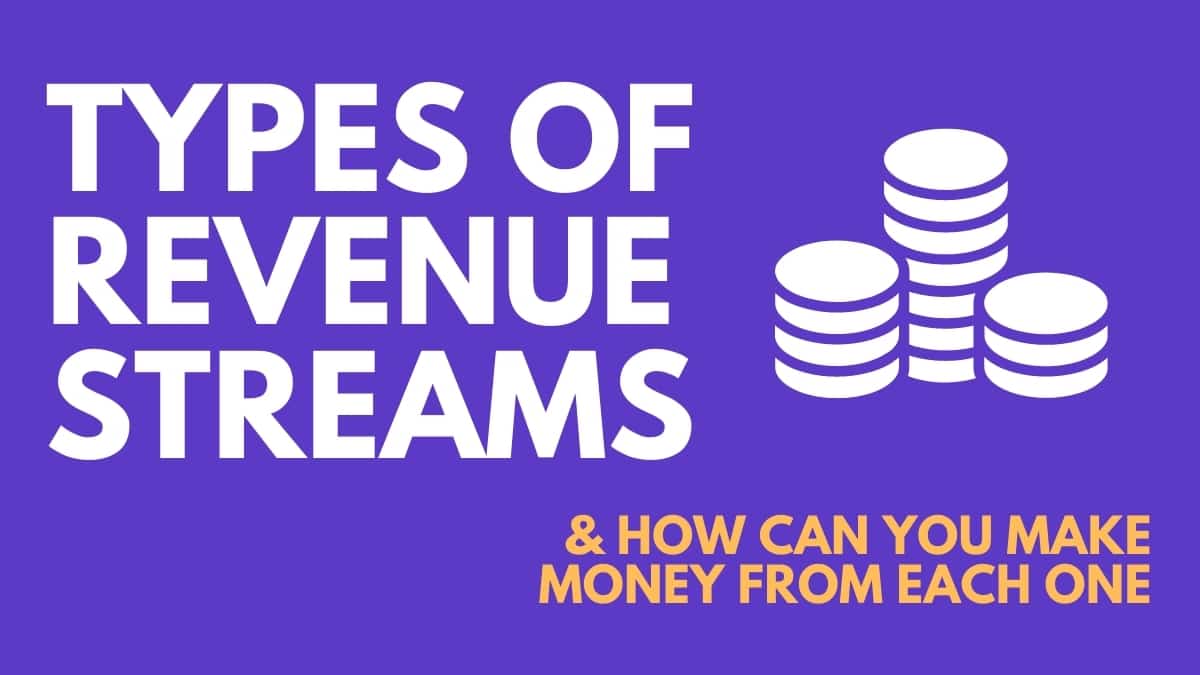Unlocking the Secrets of Online Revenue Streams
Social media has evolved into a lucrative business, with billions of users worldwide and unparalleled engagement opportunities. The likes of Facebook, Twitter, and Instagram have become significant revenue generators, with their market capitalization reaching trillions of dollars. But have you ever wondered how social media makes money? The answer lies in their ability to harness the power of user data, advertising, and e-commerce. In this article, we will delve into the world of social media monetization and explore the various ways in which these platforms generate revenue.
With over 3.8 billion people using social media, these platforms have become an essential part of our daily lives. We use them to connect with friends and family, share our experiences, and stay informed about current events. But social media platforms are not just about socializing; they are also big businesses that need to generate revenue to sustain themselves. So, how do they do it? The answer is complex, but it can be broken down into several key areas, including advertising, user data, e-commerce, and subscription-based models.
As we navigate the world of social media, it’s essential to understand how these platforms make money. By doing so, we can appreciate the complexity of their business models and the innovative ways in which they generate revenue. Whether you’re a social media enthusiast, a marketer, or simply someone who’s curious about the inner workings of these platforms, this article will provide you with a comprehensive understanding of how social media makes money.
In the following sections, we will explore the various ways in which social media platforms generate revenue, including advertising, user data, e-commerce, and subscription-based models. We will also examine the partnerships and collaborations that these platforms engage in, as well as the ways in which they monetize user-generated content. By the end of this article, you will have a deeper understanding of the social media money machine and the innovative ways in which these platforms generate revenue.
Advertising: The Lifeblood of Social Media
Advertising is the primary source of revenue for most social media platforms. These platforms have evolved into sophisticated advertising machines, offering a range of formats and targeting options to businesses and organizations. Sponsored posts, display ads, and influencer partnerships are just a few examples of the many advertising options available on social media.
Social media platforms use user data to deliver targeted ads, increasing the likelihood of conversion and return on investment for advertisers. This data includes demographic information, interests, behaviors, and preferences, which are collected through user profiles, online activities, and third-party data providers. By leveraging this data, social media platforms can deliver ads that are highly relevant to their users, resulting in higher engagement rates and better campaign performance.
The use of user data in advertising has become a key factor in how social media makes money. By providing advertisers with access to their user data, social media platforms can charge premium rates for their advertising services. This has created a lucrative revenue stream for social media platforms, with advertising revenue accounting for the majority of their income.
In addition to traditional advertising formats, social media platforms are also exploring new and innovative ways to monetize their user base. For example, Instagram’s “Shopping” feature allows users to purchase products directly from the app, while Facebook’s ” Marketplace” provides a platform for users to buy and sell goods and services. These features not only provide additional revenue streams for social media platforms but also enhance the user experience and increase engagement.
As social media continues to evolve, it’s likely that advertising will remain a key component of their revenue strategy. However, as users become increasingly savvy and ad-blocking technologies improve, social media platforms will need to adapt and innovate to maintain their advertising revenue streams. This may involve exploring new formats, such as augmented reality and virtual reality advertising, or developing more sophisticated targeting options that prioritize user experience and relevance.
How Social Media Platforms Make Money from User Data
Social media platforms collect vast amounts of user data, including demographic information, interests, behaviors, and preferences. This data is used to create detailed user profiles, which are then used to deliver targeted ads. The process of collecting and analyzing user data is known as data mining, and it is a crucial component of how social media makes money.
Data mining involves the use of sophisticated algorithms and machine learning techniques to extract insights from large datasets. Social media platforms use these insights to create highly targeted ads, which are more likely to engage users and drive conversions. For example, Facebook’s advertising platform uses data mining to identify users who are likely to be interested in a particular product or service, and then delivers targeted ads to those users.
User profiling is another key aspect of how social media platforms make money from user data. User profiling involves the creation of detailed profiles of individual users, based on their online activities and behaviors. These profiles are then used to deliver targeted ads, as well as to provide insights to advertisers and other third-party companies.
The use of user data to deliver targeted ads is a highly lucrative business, and it is a key component of how social media makes money. According to a recent report, the global digital advertising market is projected to reach $646 billion by 2024, with social media platforms accounting for a significant share of this revenue.
However, the use of user data to deliver targeted ads has also raised concerns about privacy and data protection. Many users are unaware of the extent to which their data is being collected and used, and there are concerns about the potential for data breaches and other forms of exploitation. As a result, social media platforms are under increasing pressure to provide greater transparency and control over user data, and to ensure that users are aware of how their data is being used.
Despite these challenges, the use of user data to deliver targeted ads is likely to remain a key component of how social media makes money. As the digital advertising market continues to grow, social media platforms will need to find new and innovative ways to collect and use user data, while also addressing concerns about privacy and data protection.
The Rise of E-commerce on Social Media
Social media platforms have evolved into major e-commerce players, with many platforms integrating shopping features, product placements, and affiliate marketing into their platforms. This trend is driven by the growing demand for online shopping and the increasing importance of social media in the customer journey.
Facebook, Instagram, and Pinterest are among the social media platforms that have introduced shopping features, allowing users to purchase products directly from the platform. These features include product tags, shopping carts, and checkout processes, making it easy for users to buy products from their favorite brands.
Social media platforms also take a commission on sales generated through their platforms, providing an additional revenue stream. For example, Facebook’s Marketplace allows users to buy and sell goods and services, with Facebook taking a commission on each sale.
Affiliate marketing is another way social media platforms make money from e-commerce. Influencers and content creators promote products from brands and include affiliate links in their posts. When a user clicks on the link and makes a purchase, the influencer earns a commission, and the social media platform earns a percentage of the sale.
The rise of e-commerce on social media has significant implications for businesses and marketers. Social media platforms provide a vast audience and a range of tools to reach and engage with customers. By leveraging these tools, businesses can increase brand awareness, drive website traffic, and generate sales.
However, the rise of e-commerce on social media also raises concerns about data protection and consumer rights. Social media platforms must ensure that they comply with data protection regulations and provide transparent information about their e-commerce practices.
As social media continues to evolve, it’s likely that e-commerce will play an increasingly important role in how social media makes money. Social media platforms will need to balance the needs of businesses and marketers with the needs of users, ensuring that e-commerce practices are transparent, fair, and compliant with regulations.
Subscription-based Models: The Future of Social Media Revenue
Social media platforms are increasingly turning to subscription-based models as a way to generate revenue. These models provide users with access to premium features, exclusive content, and other benefits in exchange for a monthly or annual fee.
Facebook, for example, has introduced a range of premium features, including advanced analytics and insights, to help businesses and marketers better understand their audience and optimize their content. These features are available to users who pay a monthly subscription fee.
Twitter has also introduced a paid verification service, which allows users to verify their accounts and access exclusive features, such as advanced analytics and priority customer support. This service is available to users who pay an annual fee.
Subscription-based models provide social media platforms with a predictable and recurring revenue stream, which can help to reduce their reliance on advertising revenue. They also provide users with more control over their experience and access to exclusive features and content.
However, subscription-based models also raise concerns about the potential for social media platforms to create a two-tiered system, where users who pay for premium features have more access to information and opportunities than those who do not. This could exacerbate existing inequalities and create new challenges for users who are already marginalized or excluded.
As social media platforms continue to evolve, it’s likely that subscription-based models will play an increasingly important role in how social media makes money. Platforms will need to balance the needs of users with the need to generate revenue, and ensure that subscription-based models are fair, transparent, and accessible to all.
Ultimately, the success of subscription-based models will depend on the value that they provide to users. If users feel that they are getting a good deal and that the premium features and content are worth the cost, then they will be more likely to subscribe. But if users feel that they are being nickel-and-dimed or that the premium features are not worth the cost, then they will be less likely to subscribe.
Partnerships and Collaborations: Expanding Revenue Horizons
Social media platforms are increasingly engaging in partnerships and collaborations to expand their revenue horizons. These partnerships can take many forms, including content licensing deals, co-branded products, and strategic investments.
Content licensing deals, for example, allow social media platforms to license content from other companies or individuals, which can then be used to generate revenue through advertising or other means. This can be a win-win for both parties, as the content creator receives a fee for their content, and the social media platform gains access to high-quality content that can attract and engage users.
Co-branded products are another way that social media platforms can generate revenue through partnerships. For example, a social media platform might partner with a fashion brand to create a line of co-branded clothing or accessories. This can help to drive revenue for both parties, as well as increase brand awareness and engagement.
Strategic investments are also a key way that social media platforms can generate revenue through partnerships. For example, a social media platform might invest in a startup or other company that offers a complementary service or product. This can help to drive revenue for the social media platform, as well as provide a strategic advantage in the market.
Partnerships and collaborations can also help social media platforms to expand their user base and increase engagement. For example, a social media platform might partner with a popular influencer or content creator to promote their platform and attract new users. This can help to drive revenue for the social media platform, as well as increase brand awareness and engagement.
Overall, partnerships and collaborations are an important way that social media platforms can generate revenue and expand their user base. By working with other companies and individuals, social media platforms can access new revenue streams, increase brand awareness and engagement, and drive growth.
Monetizing User-Generated Content
Social media platforms have long struggled with the issue of monetizing user-generated content. On one hand, user-generated content is a key driver of engagement and growth on social media platforms. On the other hand, it can be difficult for platforms to generate revenue from this content without alienating users or violating copyright laws.
One way that social media platforms have addressed this issue is through the use of content ID systems. These systems use algorithms to identify and flag copyrighted content, allowing platforms to remove or monetize it accordingly. For example, YouTube’s Content ID system allows copyright holders to claim ownership of their content and earn revenue from ads displayed on videos that use their music or other copyrighted material.
Another way that social media platforms monetize user-generated content is through revenue-sharing models. For example, Instagram’s Partner Program allows popular creators to earn money from their posts and stories by sharing revenue with the platform. This model provides creators with a financial incentive to produce high-quality content, while also allowing the platform to generate revenue from ads and sponsored content.
However, the monetization of user-generated content also raises important questions about copyright and ownership. For example, who owns the rights to a video or image posted on social media? And how should platforms balance the need to generate revenue with the need to protect users’ rights and interests?
Ultimately, the monetization of user-generated content is a complex issue that requires a nuanced and multifaceted approach. Social media platforms must balance the need to generate revenue with the need to protect users’ rights and interests, while also ensuring that creators are fairly compensated for their work.
As social media continues to evolve, it’s likely that we’ll see new and innovative ways for platforms to monetize user-generated content. For example, some platforms are exploring the use of blockchain technology to create decentralized and transparent systems for content ownership and monetization.
The Future of Social Media Monetization
As social media continues to evolve, it’s likely that we’ll see new and innovative ways for platforms to generate revenue. Emerging trends, technologies, and innovations will play a significant role in shaping the future of social media monetization.
One area that’s likely to see significant growth is the use of artificial intelligence (AI) and machine learning (ML) to personalize and optimize advertising. Social media platforms are already using AI and ML to deliver targeted ads, but we can expect to see even more sophisticated applications of these technologies in the future.
Another area that’s likely to see growth is the use of blockchain technology to create decentralized and transparent systems for content ownership and monetization. Blockchain technology has the potential to revolutionize the way that social media platforms handle user-generated content, and could provide new opportunities for creators to monetize their work.
Virtual and augmented reality (VR/AR) are also likely to play a significant role in the future of social media monetization. As VR/AR technologies become more widespread, we can expect to see new and innovative ways for social media platforms to generate revenue, such as through sponsored VR/AR experiences and virtual product placements.
Finally, social media platforms are likely to continue to explore new and innovative ways to generate revenue through e-commerce and subscription-based models. As more and more people turn to social media for shopping and entertainment, we can expect to see new and innovative ways for platforms to generate revenue through these channels.
Overall, the future of social media monetization is likely to be shaped by a combination of emerging trends, technologies, and innovations. As social media platforms continue to evolve, we can expect to see new and innovative ways for them to generate revenue, and for creators and users to benefit from these developments.








